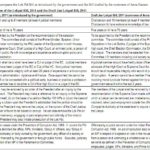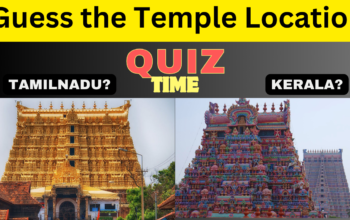The agitation led by Anna Hazare has focussed on the formation of a Lok Pal to address the issue ofcorruption. We look at some data on the existing systems of identifying and prosecuting cases ofcorruption against public officials.
WikiLeaks founder Julian Assange has said the “tremendous” anti-corruption movement “building up” in India is a result of the publication of “cablegate” revelations by The Hindu in recent weeks.
Citing the campaign, led by Anna Hazare, as an example of the impact of WikiLeaks cables, he said what was happening in India was “something that has not happened since the time of Gandhi.”
In an interaction with journalists at the Press Club of India here, Mr. Hazare said the Bill was stalled eight times in Parliament and if it was not passed by August 15, there would be another agitation. “If this is blackmail, as some people are saying it is, then I will continue to do this blackmail till my last breath as it is for the good of the people and the nation.”
According to him, involvement of “senior Ministers” in drafting the Bill would ensure that other Ministers and Members of Parliament fall in line when legislation comes up for discussion in Parliament. “I have full faith in our democracy and Parliament,” he said.

The government has frequently delayed sanction for prosecuting officials:
- Prosecution of public servants for corruption may usually betaken up only after the respective government gives sanctionto do so. This provision is designed to protect honest officialsfrom harassment.
- However, the provision may be misused by delaying responseto requests for sanction.
- As of end-2010, the central government had not providedresponses to 236 requests. Of these, 155 requests (66%) werepending for over three months.
- State governments had not responded to 84 requests, of which13 (15%) were pending for more than three months.
The main investigating agency, the CBI, is understaffed:
- The Central Bureau of Investigation (CBI) is the main agencyused by the CVC to investigate cases of corruption andmisuse of office by public officials.
- As of December 2010, 21% of the sanctioned posts in CBIwere vacant.
- This includes 52% of the posts of law officers, 65% oftechnical officers and 21% of executive officers.
The courts have also been slow in deciding CBI cases:
- The criminal justice system has also been slow inprosecuting the CBI cases.
- As of end-2010, there were 9,927 CBI cases pending in courts.
- Of these, 2,245 cases (23% of the total) were pending formore than 10 years.
The stand-off between the government and Shri Anna Hazare, social activist has brought the issue of the Lok Pal Bill to the forefront. First introduced way back in 1968, the Bill was introduced eight times in Parliament. However, it lapsed each time after the Lok Sabha dissolved. The note gives some historical background on the Bill as well as the recommendations of various commissions on the office of the Lok Pal.
The central government is considering the introduction of a Lok Pal Bill to put in place a mechanism to tackle corruption.1 Currently, public servants (such as government employees, judges, armed forces, police) can be prosecuted for corruption under the Indian Penal Code, 1860 and the Prevention of Corruption Act, 1988. However, the Code of Criminal Procedure and the Act require the investigating agency (such as CBI) to get prior sanction of the central or state government before it can initiate the prosecution process in a court.
The idea of constituting an Ombudsman type institution to look into the grievances of individuals against the administration was first mooted in 1963 during a debate on Demands for Grants for the Law Ministry.4 In 1966, the First Administrative Reforms Commission recommended that two independent authorities at the central and state level be established to enquire into complaints against public functionaries (including Members of Parliament).
International experience
The basic idea of the institution of Lok Pal was borrowed from the concept of Ombudsman in countries such as Finland, Norway, Denmark, Sweden, U.K. and New Zealand. In 1995, the European Union created the post of European Ombudsman. Presently, about 140 countries have the office of the Ombudsman. The Ombudsman is an institution, independent of the judiciary, executive and legislature and analogous with that of a high judicial functionary. He is mostly free to choose his investigation method and agency. The expenditure of the office is under Parliamentary control. In Sweden, Denmark and Finland, the office of the Ombudsman can redress citizens’ grievances by either directly receiving complaints from the public or suo moto. However, in the UK, the office of the Parliamentary Commissioner can receive complaints only through Members of Parliament (to whom the citizen can complain).12 Sweden and Finland also have the power to prosecute erring public servants.
Second Administrative Reforms Commission (2007)
Lok Pal
-
The Constitution should be amended to provide for a national Ombudsman called the Rashtriya Lokayukta. The role and jurisdiction of the Rashtriya Lokayukta should be defined in the Constitution while the composition, mode of appointment and other details can be decided by Parliament through legislation.
-
The jurisdiction of Rashtriya Lokayukta should extend to Ministers (except the Prime Minister), Chief Ministers, and Members of Parliament. In case the enquiry establishes the involvement of any other public official, it can enquire against such public servants.
-
The Prime Minister should be kept out of the jurisdiction of the Rashtriya Lokayukta.
-
The Rashtriya Lokayukta should consist of a serving or retired Judge of the Supreme Court as the Chairperson, an eminent jurist as Member and the Central Vigilance Commissioner as the ex-officio Member.
-
The Chairperson and members of the Rashtriya Lokayukta should be selected by a Committee consisting of the Vice President, the Prime Minister, the Leader of the Opposition, the Speaker of the Lok Sabha and the Chief Justice of India. The Chairperson and Member should be appointed for only one term of three years and they should not hold any public office later, except if they can become the Chief Justice of India.
Lokayukta
-
The Constitution should make it obligatory on the part of state governments to establish the institution of Lokayukta and stipulate the general principles about its structure, power and functions.
-
The Lokayukta should be a multi-member body consisting of a judicial Member in the Chair, an eminent jurist or eminent administrator as Member and the head of the State Vigilance Commission as ex-officio Member.
-
The Chairperson and member of the Lokayukta should be selected by a Committee of the Chief Minister, Chief Justice of the High Court and the Leader of the Opposition in the Legislative Assembly. There is no need to have an Uplokayukta (deputy Lokayukta).
-
The Chairperson and members of the Lokayukta should be appointed strictly for one term only and they should not hold any public office under government thereafter.
-
The Lokayukta should have its own machinery for investigation. Initially, it may take officers on deputation from the state government, but over a period of five years, it should take steps to recruit its own cadre, and train them properly.
-
All cases of corruption should be referred to Rashtriya Lokayukta or state Lokayukta and these should not be referred to any Commission of Inquiry.
-
The jurisdiction of the Lokayukta would extend to only cases involving corruption. They should not look into general public grievances. The Lokayukta should deal with cases of corruption against Ministers and MLAs.
-
Each State should constitute a State Vigilance Commission to look into cases of corruption against state government officials. The Commission should have three Members and have functions similar to that of the Central Vigilance Commission. The Anti Corruption Bureaus should be brought under the control of the State Vigilance Commission.
Disclaimer from PRS India: This document is being furnished to you for your information. You may choose to reproduce or redistribute this reportfor non-commercial purposes in part or in full to any other person with due acknowledgement of PRS Legislative Research (“PRS”). Theopinions expressed herein are entirely those of the author(s). PRS makes every effort to use reliable and comprehensive information, butPRS does not represent that the contents of the report are accurate or complete. PRS is an independent, not-for-profit group. Thisdocument has been prepared without regard to the objectives or opinions of those who may receive it.
Related Posts
Hi there! I’m Sethu, your go-to guy for all things tech, travel, internet, movies, and business tips. I love sharing insights and stories that make life more interesting. Let’s explore the world together, one article at a time!










